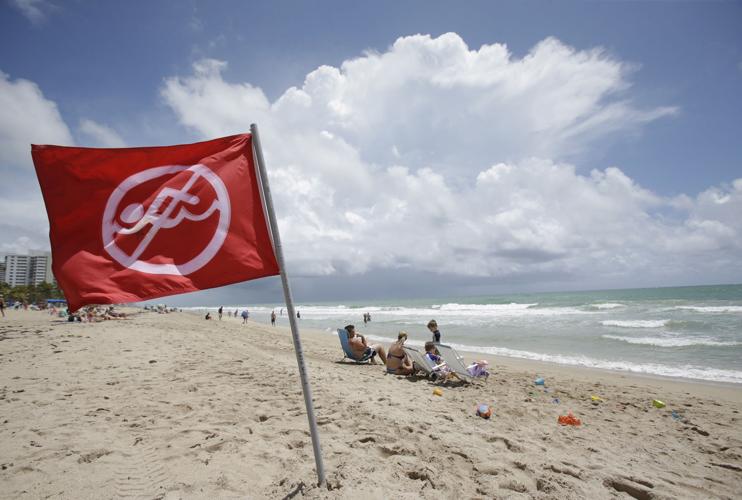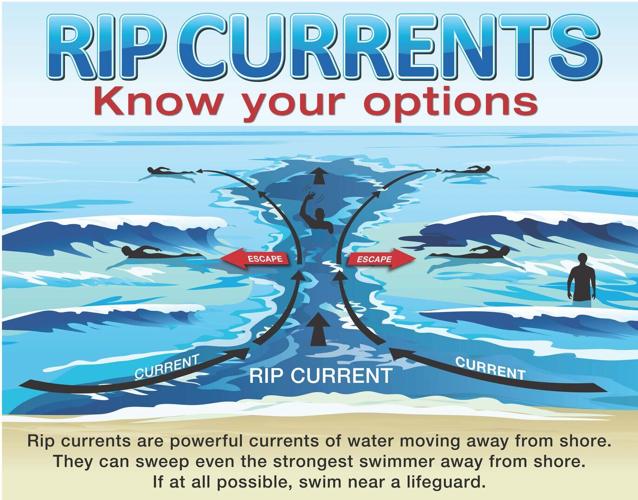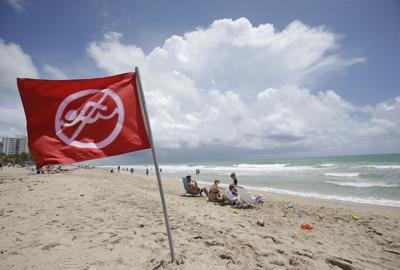According to statistics gathered by the National Weather Service, thus far, in 2023, 29 people have drowned in rip current-related incidents in Florida. Additionally, three people have drowned in Alabama and three in Louisiana in rip current incidents.
In 2023, of the 60 deaths attributed to rip currents in the U.S. thus far, only three were women.
Rip currents, often called riptides, are powerful, narrow channels that flow away from the shore. They can occur at any beach where there are breaking waves, according to the NWS. According to data gathered in the last decade, Florida beaches have more rip currents than beaches in any other U.S. state.
Spotting a rip current
Forecasters say the best way to spot a rip current is to look for areas in the water that have a darker color, where waves are not breaking and seaweed and debris are pulling away from the shoreline.

A rip current on the North Carolina coast
Escaping a rip current
If you are caught in a rip current, swim left or right instead of toward the beach, or float if the waves are too strong. Do not try to swim to the shore while caught in the current.

image via National Weather Service
Beach forecasts and riptide risk level
Check here for the latest forecasts and warning on riptides.
Individual beaches also have their own flag warning system to better guide beachgoers on the conditions of the waters.
Here's what each flag color means:
Two red flags: The water is closed to the public.
Red flag: High surf and/or strong currents.
Yellow flag: Moderate surf and currents.
Green flag: Calm conditions and low surf.
Purple flag: Dangerous marine life has been spotted in the area.




